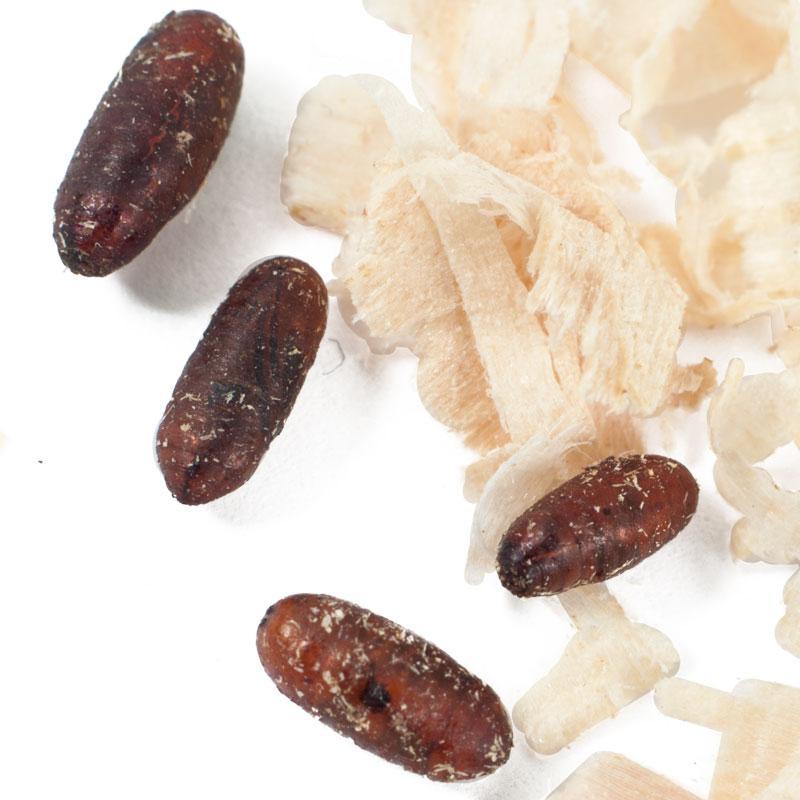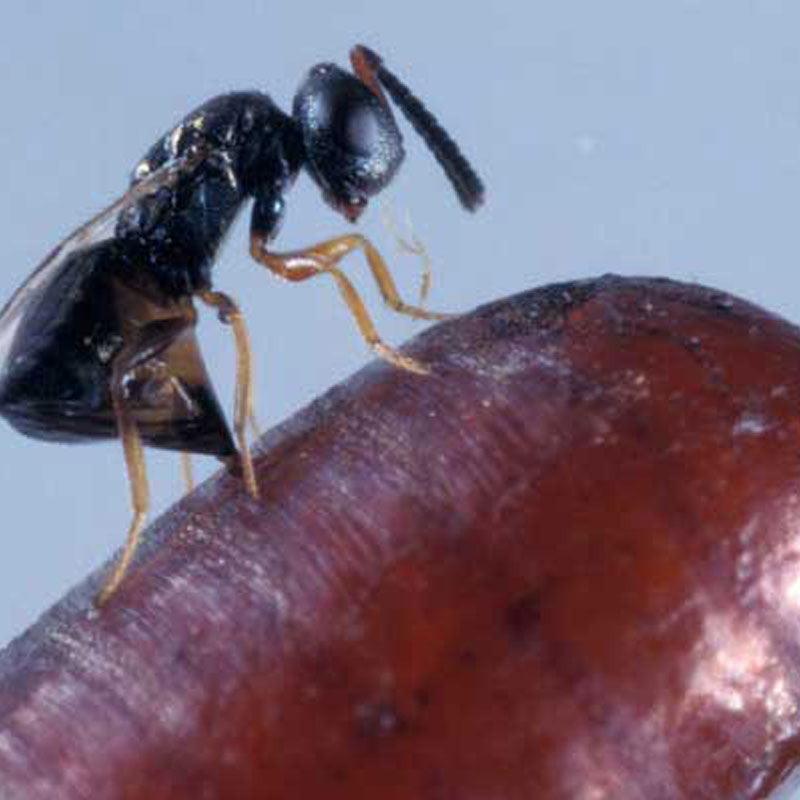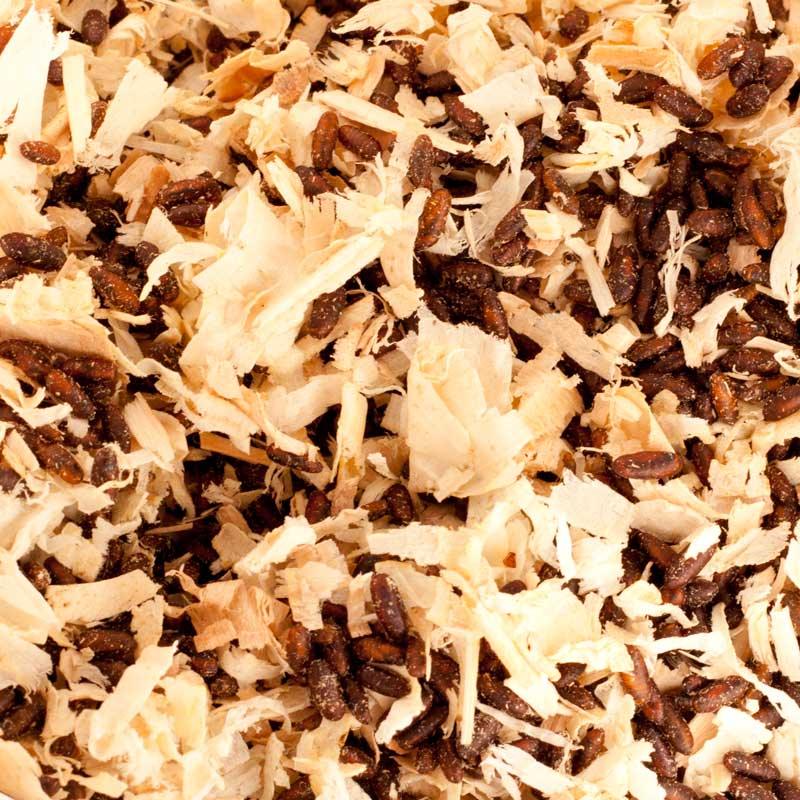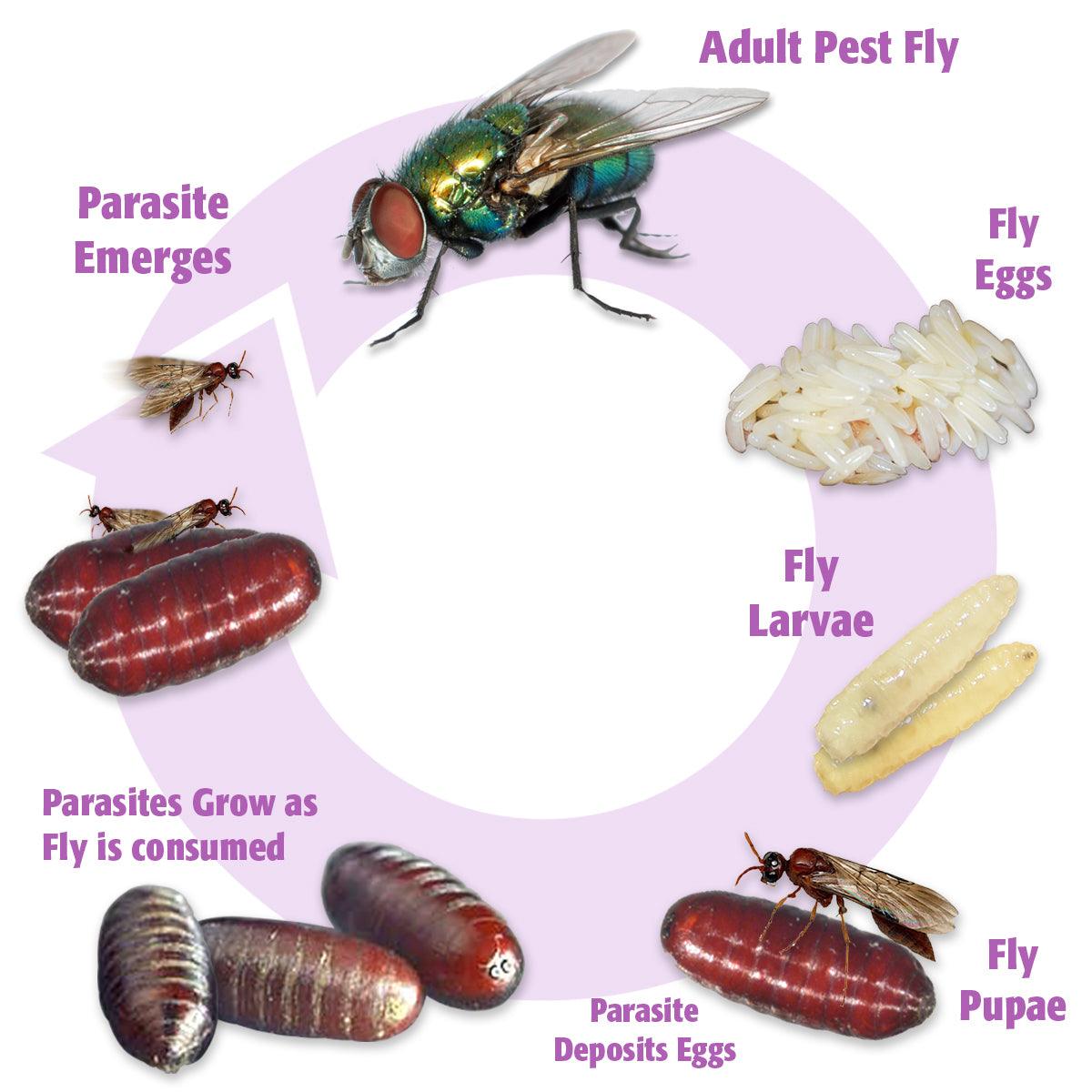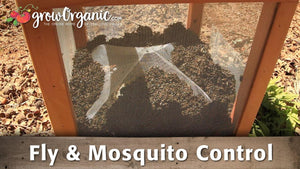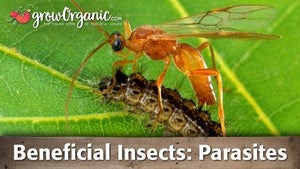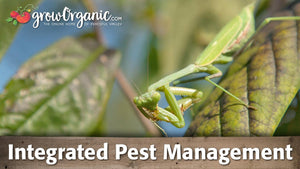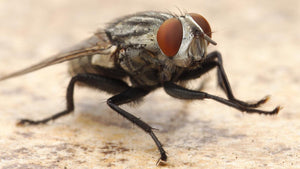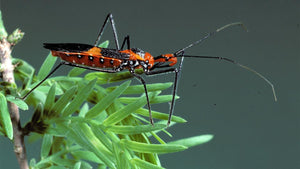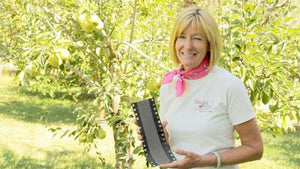Item Number: PBE250
Fly Parasite Complex
Reduce Fly Populations with a Natural Predator
Price includes delivery via Priority Mail (US Postal Service) either to your mailbox, or to a Post Office box.
Insects are sent out Tuesday and Wednesday. Place your order at least 3 business days in advance of desired shipping date (Monday holidays will delay processing of order). Unless you specify otherwise, we will send your Beneficial Insects on the next possible shipping day. You could also request delayed delivery in the Order-Specific Comments box.
Muscidifurax raptorellus, Muscidifurax zaraptor, and Spalangia cameroni are tiny wasps that don't bother humans, but parasitize the pupae of many species of flies found in areas with livestock, breaking the life cycle of the flies.
You cannot place too many parasites. You can place too few. For dairies, feed lots and horse stables, we recommend between 300 and 500 parasites per animal per month during the fly season (March to October or November depending on weather). For confined hog operations, this number will be between 200 and 400 parasites per animal per month. Chickens require from 1 to 5 per bird per month. If your fly problem is very severe, these numbers should be increased; the first and second releases especially should be doubled or tripled.
- Begin release program as soon as the weather begins to warm up.
- Flies reproduce at a faster rate than the the fly parasites, so reintroduction on a regular basis is important.
- Release every 1- 4 weeks during all warm months, generally March or April (once temperature reaches 80°F) through October.
- For later starts, double the rates for the first 2 releases.
- Use in conjunction with PVF&GS Fly Trap for best results.
Using predatory wasps to control fly populations in farms and gardens is a fascinating and environmentally friendly approach to pest management. This method, part of an agricultural practice known as biological control, harnesses the natural predator-prey relationships to maintain pest populations at manageable levels.
The concept of biological control dates back to ancient times, but it wasn't until the late 19th and early 20th centuries that the practice began to gain scientific backing and widespread acceptance. One of the early successes of biological control was the introduction of the Vedalia beetle to control cottony cushion scale in California citrus orchards in the 1880s. This success paved the way for further exploration into using natural predators to control pests.
Predatory wasps, belonging to various species, play a significant role in controlling fly populations. These wasps are not the typical wasps that people generally fear; they are often smaller and less aggressive towards humans. Instead, they are formidable predators of various insect species, including flies.
There are different types of predatory wasps used in controlling flies. For example, some species of the genus Spalangia are known to parasitize fly pupae. These wasps lay their eggs inside the fly pupae, and the developing wasp larvae consume the pupae from the inside. Another example is the genus Muscidifurax, which also targets fly pupae. The use of these wasps is particularly prevalent in animal farms where flies can be a significant problem, spreading diseases and causing distress to livestock.
The introduction of predatory wasps into a farm or garden ecosystem is a delicate process. It requires a thorough understanding of the ecological balance and the life cycles of both the predator and the prey. The goal is to establish a sustainable population of wasps that can effectively control the fly population without causing harm to other beneficial insects or the overall ecological balance.
One of the significant advantages of using predatory wasps is the reduction in the need for chemical pesticides. Traditional fly control methods often involve the use of chemicals that can be harmful to the environment, beneficial insects, and even humans and livestock. Biological control, on the other hand, is a more sustainable and eco-friendly approach.
However, the effectiveness of predatory wasps can be influenced by various factors such as climate, the availability of prey, and the presence of other predators or competitors. Farmers and gardeners need to monitor the situation closely and may sometimes need to reintroduce wasps or adjust their strategies.
In recent years, the practice of using predatory wasps has gained popularity, particularly in organic farming, where the use of chemicals is limited. Research continues to evolve in this field, with scientists exploring the potential of different wasp species and developing methods to enhance their effectiveness and sustainability.
The use of predatory wasps in controlling fly populations represents a fascinating blend of ancient practices and modern scientific understanding. It exemplifies a shift towards more sustainable and environmentally friendly agricultural practices, highlighting the importance of understanding and working with natural ecosystems rather than against them.
Check Your Zone Compatibility:
Compatible with your zone.
Growing Zone for

Our Guarantee To You
Since 1976, we've served our customers at every stage of growing. Please contact us at any time. We are happy to support and assist you.
Shipping Information
Shipping Information
FREE SHIPPING via USPS Priority Mail to the lower 48 states.
Cannot ship to the following states: HI, PR, VI, GU
Ships directly from the vendor. Tracking emails will be sent once the box ships.
Shipping Weight: 1.0 lb
Dimensions: 0.0"L x 0.0"W x 0.0"H
Features
Features
Characteristics
Characteristics
Use Instructions
Use Instructions
Useful Information
Useful Information
Guarantee
Guarantee
Share
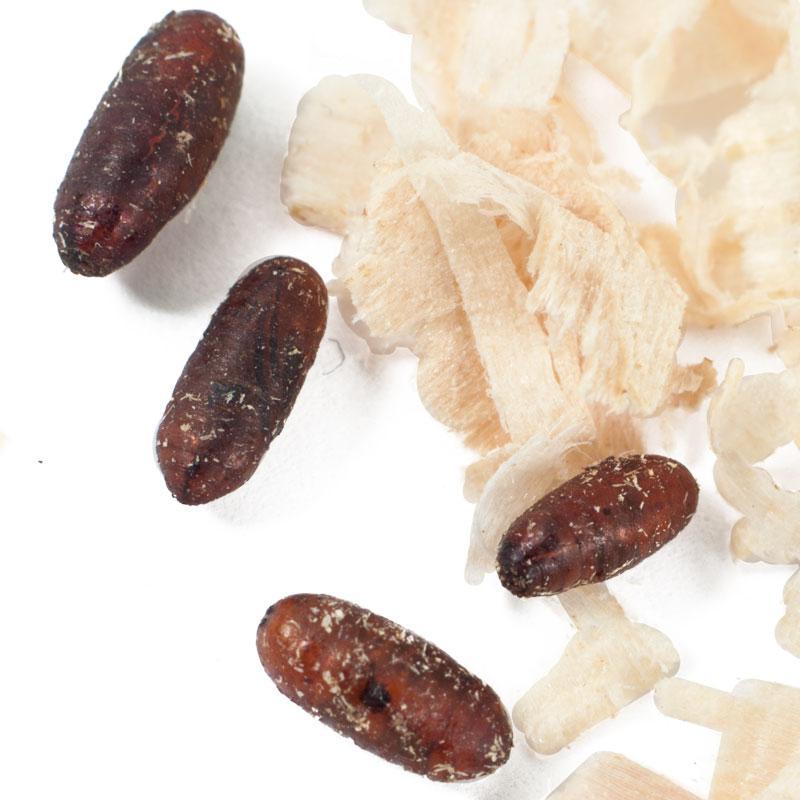
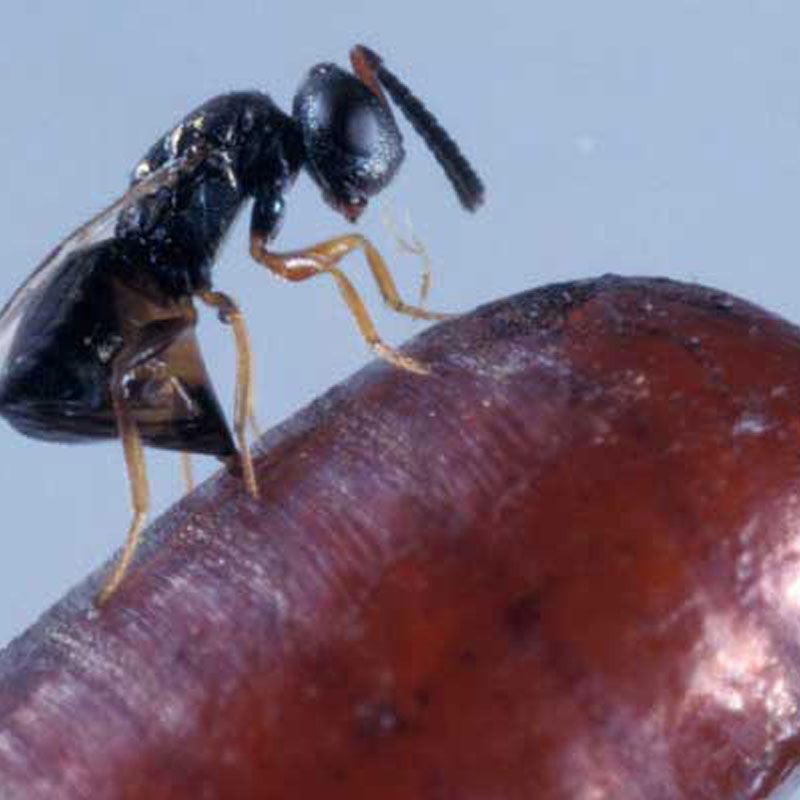
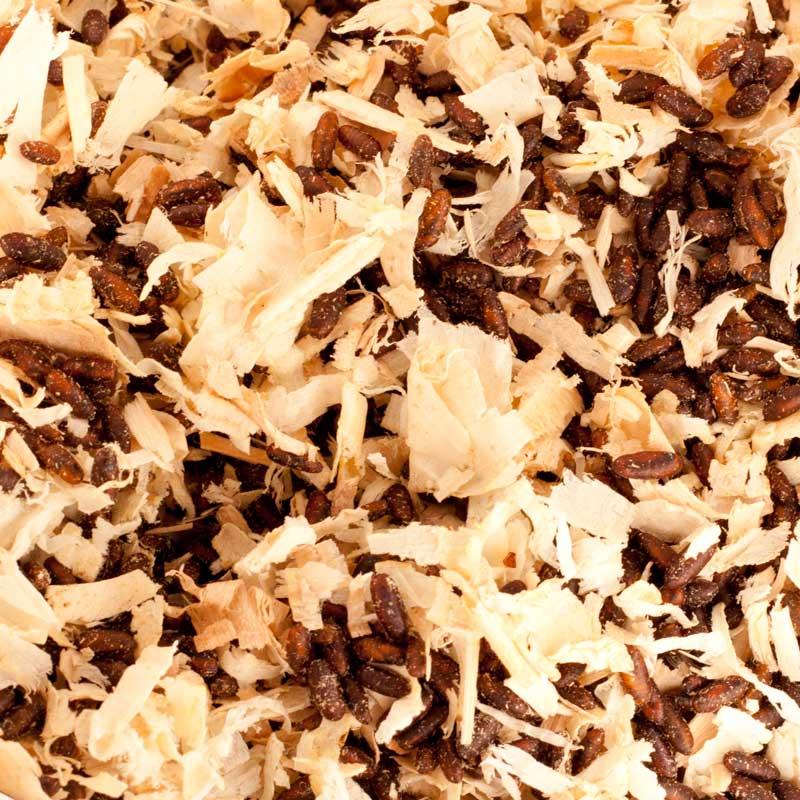
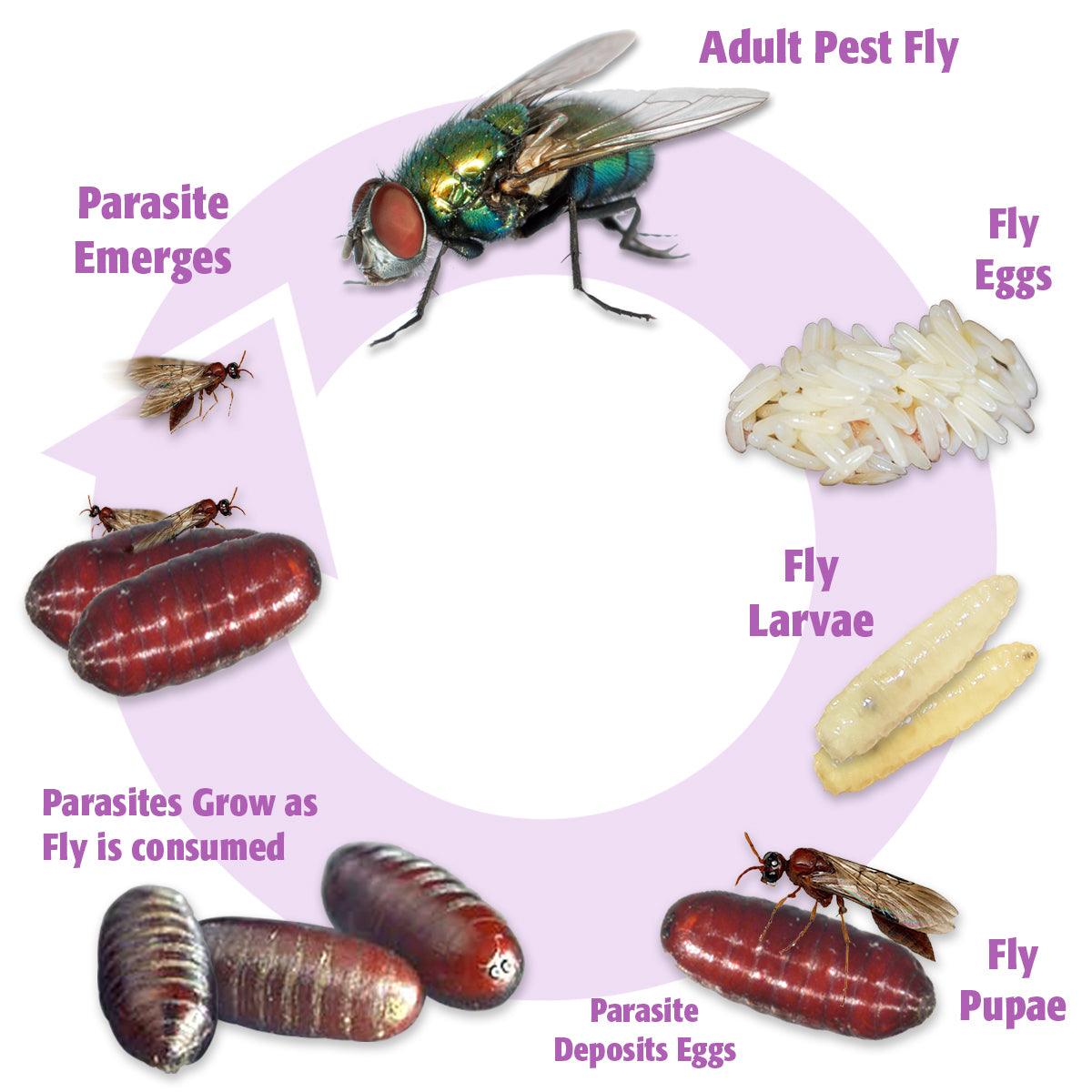
Number of flies around the house even around the cattle themselves and this was the effect from 1 15,000 count packet. We definitely will be buying more!
It took them a few days to hatch, but then one day tiny wasps were crawling around inside the bag. I divided the contents of the package into several locations just outside my chicken yard and - there are noticeably fewer flies now. According to the per-chicken calculations, I didn’t need nearly as many wasps as hatch from the package. It’s a lot in the package if you’re raising chickens in a backyard or homestead, so it can help to have one or more buddies to share with. And I haven’t set up my traps yet, but it is suggested to have traps for adult flies and the parasites to attack the pupae. I’m sure I’ll buy again!

